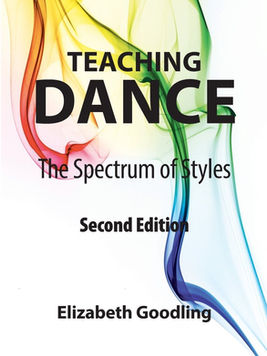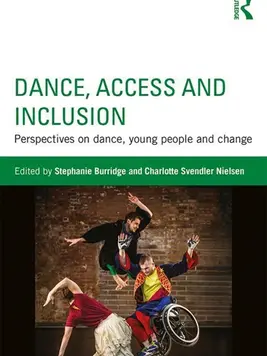top of page
Danielson Domain 2: Classroom Environment
2a. Creating an Environment of Respect & Rapport
In this video, Dance III students review and perform across the floor exercises in pairs, using co-created checklists to assess each other. Throughout the lesson, I check in with students, answer questions, and allow students to work together freely as I assist others. The seamless and simultaneous work shows the respect and rapport I have built within the classroom and with my students.
2b. Establishing a Culture of Learning & 2c. Managing Classroom Procedures
In a well-structured classroom, students must understand the expectations of learning and participation in class activities to ensure they succeed. A clear plan for everyday procedures is the best way to help students remain active and engaged in your class. This classroom management plan for grades 9-12 outlines classroom rituals and procedures, considerations for students with special needs, and modifications for different situations.
2d. Managing Student Behavior

Positive student behavior is established through the planned procedures of everyday learning. Simple classroom rules and expectations, like when I use my Tingsha Bells to call students to attention in my afterschool program at Greater Brunswick Charter School, work well as behavior management tools because students recognize them in every lesson. Consistency and frequency on the teacher's part is key when managing behavior in any classroom.
2e. Organizing Physical Space

Given the spatial design of a classroom, it's crucial to make sure that students feel safe, comfortable, and inclined to challenge themselves. By prioritizing safety at all times, I ensure that students are able to move freely and securely, especially if the space is not designated to or designed for dance. This Bitmoji Classroom, which mimics my physical space, is shared with my students via Google Classroom and contains links to different resources they can use for our course work and beyond.
Danielson Domain 3: Instruction
3a. Communicating with Students
Students with varying needs a more likely to grasp and retain content when the information is provided in multiple formats. This range of materials, paired with options for students to communicate their responses, questions, needs, etc. is important when teaching multiple grade levels, English Language Learners, and beginners in dance. When teaching new dance concepts or history, I always pair my lectures with visuals and vocabulary sheets so student can hear and see the content. My lessons also utilize planned performance, verbal, and written assessments so students with certain strong points can still thrive.
3b. Using Questioning & Discussion Techniques

As well as using lesson and content specific guiding questions, I use discussion and feedback frameworks when students are creating. Liz Lerman's Critical Response Process helps my students provide meaningful feedback to their peers that lead us into in-depth conversations about the meaning behind the movement, how technical aspects can enhance or hinder choreography, and as a base for choreographers to ask their peers questions about how they interpreted what they saw or suggestions for continued work. After practicing CRP many times in choreography, improvisation, and presentation workshops, the students begin to bring new and challenging concepts to the table during regular classes and lectures.
3c. Engaging Students in Learning
These student work samples show students understanding of their personal movement preferences, implying deep reflection on performance skills and movement habits. This class was taught in English and Spanish to keep all learners engaged. The video shows a group of my students at Paul Robeson Community School, where we used Social Emotional Learning and personal/group identities to create group social dances. Students thrive in classes that utilize their interests, strengths, cultural backgrounds, etc. through carefully designed activities and materials.
3d. Using Assessment in Instruction
I use formative and summative assessment in every lesson as a way for students show progression and development within my class. I often have the student help me create the rubric or checklist for a summative assessment as a formative assessment in the same lesson. This co-creating process shows student understanding of core concepts and reflection on their personal performance. This checklist was developed by a Dance III class who was improving a piece for their Holiday Concert.
Danielson Domain 4: Professional Responsibilities
4a. Reflecting on Teaching
Teachers should continue to grow in their teaching practice throughout their careers, and engaging in meaningful reflection is the best way to consider new ways of teaching. This formal reflection assignment, meant to analyze performance in lesson planning, instruction, and assessment design as I looked forward to tackling EdTPA, shows my recognition in what I needed to improve and how I could do so. I have taken much of what I learned through trial and error in these areas of teaching into my professional teaching practice.
4b. Maintaining Accurate Records
I am always sure to keep accurate records, whether it be for attendance, grades, or my teaching agenda. This ensures that students receive the correct grades, as well as are provided with all the information I intended to cover. This document is the unit plan agenda that my co-teachers and I kept while teaching at Paul Robeson Community School. We created the document in advance of teaching the unit and updated it after each lesson to keep track of what we covered and what still needed to be completed. This organization made sure we met our goals for the unit.
4c. Communicating with Families
Communicating in an effective and timely manner with families ensures engagement from people in the students' homes, but also provides an opportunity for parents and guardians to become involved in their child's school activities and learning. My co-teachers and I created this start-of-program letter for the parents of our students at Paul Robeson Community School. The letter was provided in English and Spanish to accommodate parents who primarily speak Spanish, and it outlines our upcoming dance unit within the afterschool program.
4d. Participating in a Professional Community &
4e. Growing and Developing Professionally




As I continue to grow professionally, I strive to participate in and give back to the dance community by remaining active as a professional dancer and arts administrator, building my professional education skills, and teaching students and peers alike. I am the Executive Director of Mignolo Arts in Metuchen, NJ, an organization that provides equitable arts resources for local, emerging artists, and I dance in their company ~mignolo dance~, as seen in our recent feature-length dance film Soldier Island. I regularly attend professional development for dance and arts teachers, including an Isadora Duncan Technique Pedagogy course, a visual art and history integration workshop, and "Teaching the Whole Child Through Dance", an international symposium hosted by the Arnhold Institute, Kookmin University, Teachers College at Columbia University, and Ballet Hispanico. Finally, it is important to me as a Rutgers alum to continue to provide for current and future students, and my school. I recently co-taught a Social Justice and Social & Emotional Learning workshop for undergraduate dancers, where we talked about helping students of all ages grow as people through dance, and I participated as a Rutgers MGSA Dance representative and Summer Conservatory adjudicator at the NJ High School Dance Festival.
Sample Lesson & Unit Plans
Sample Lesson Plans
Joint & Muscle Actions Anatomy
w/ TheraBands
External Rotation & Extension of the Leg: Ballet Barre
Decisions in Technique and Performance Quality in Choreography
Translating Lower Body Conditioning with Imagery to Dance Technique
Weight & Time Dynamics in Modern Phrase Work
Refining Performance in Choreography
Musical Terminology in Movement & Choreography
Vaganova Ballet First Port de Bras and Borrees
Utilizing Choreographic Tools
Sample Unit Plans
Interdisciplinary Arts Unit Plan: Dance & Music Project
Improvisation Unit: Exercises & Activities
Translating Literature into Movement Unit Plan: Choreography Project
Social Emotional Learning/Social Justice Unit Plan: Social Dances
bottom of page














